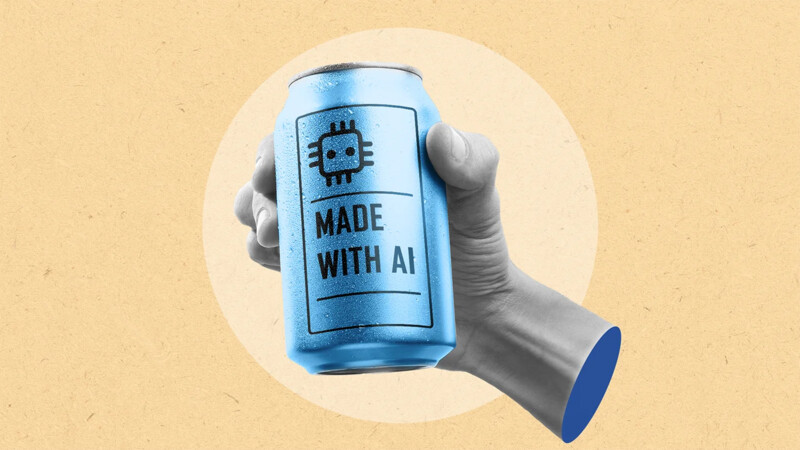Technology with nothing to hide
Why 2024 will sound the call for AI transparency in business
How many labels do you encounter on the way to work? Any food you buy in a store has a nutrition facts label. The train you take may include a sign that you’re required to have proof of payment. The elevator you ride in tells you how many people it can safely carry. But once you start work, every experience is designed to avoid the friction of reminding you of rules, let alone make you think before starting.
Your computer doesn’t flash a message that you shouldn’t pour coffee over the keyboard. The motion-activated lights in your ceiling simply turn on and off without announcement. If you have a standing desk, you’re trusted to figure out when to raise or lower it for optimal health.
Today, however, a new challenge arises for companies: deciding how disclosures show up for employees or customers when they’re using generative AI-powered bots and other AI applications. I believe those who succeed in this era will find ways to make it instantly clear (and then safely forgettable) that you are interacting with a bot, as opposed to a human agent.
Pressure on the horizon
At my company, Freshworks, our products allow you to customize how your bots appear. The next year will be really interesting as we see which of our customers decides to do this proactively, and even advertise that they are doing that.
For now, we know that English is the new programming language, conversation is the new UI, and no one is hoping to spend more time solving problems. We are also seeing that as gen AI powers bots not just to answer questions but to complete tasks, the opportunity has never been greater for companies to personalize this technology.
To be sure, there is pressure on the horizon. Regulators are exercising plenty of gray cells figuring out how to compel companies to disclose when AI is at play. For example, the EU just made significant headway on its AI Act. If it becomes law, it would include new transparency requirements for makers of the largest general-purpose AI systems. While these bodies are inevitably moving slower than the systems they want to influence, it would be foolish to assume we’ll never see executive orders move toward legislation on one side of the Atlantic or the other.
The question for businesses is: Are you ready to embrace AI transparency on your own terms for customers and employees now, or plan to wait to be told how to do it? Indeed, when the technology in question is so visible already to customers—unlike, say, third-party cookies—why put this off?
Don’t play the waiting game
What I’ve observed over the last few years is that when you wait for regulators to dictate a critical part of your business, the experience is unlikely to be smooth. Consider how many times a day you click past an offer to change your cookie preferences thanks to GDPR. Not to mention the jarring experience of seeing these alerts pop up over pages carefully designed to maximize your interest.
Are you ready to embrace AI transparency now, or plan to wait to be told how to do it?
Even if you support the underlying motivation, these notices are annoying and literally slow business down. We have to put up with these now because nobody pioneered a mode of transparency that would put regulators’ minds at rest.
Companies can take a different road by applying just a fraction of creativity both to naming and the way bots announce themselves. If a sufficient number of organizations follow through, I predict 2024 will be the year Gen X, born between 1965 and 1979, shows widespread adoption of bots as their preferred way to interact with customer and IT support.
The generational X factor
That’s significant because Gen X is the generation that built today’s modern tech-focused culture, believing that technology can change society for the better and controlling much of its wealth. Yet a recent study by Consumer Affairs found that over 90% of Gen X (and Baby Boomers) feel overwhelmed by technology.
Today’s innovators understandably exercise much of their own gray cells understanding how Gen Z and Gen Alpha expect technology to serve them. Despite that, with this context, I believe if you build bots successfully for Gen X, at least for now, you’ll trigger the most powerful swings in customer behavior.
Gabi Buchner, a certified conversation designer at SAP, wrote passionately at the beginning of the decade about the ways and reasons to give your bot an identity. She concluded that you should choose it as carefully as you would pick the name of your newborn because it can help make or break a deal.
When you put it that way, it’s hard to know why you’d put off seizing this opportunity.
Learn how to customize your bots using Freddy AI Agent here.
